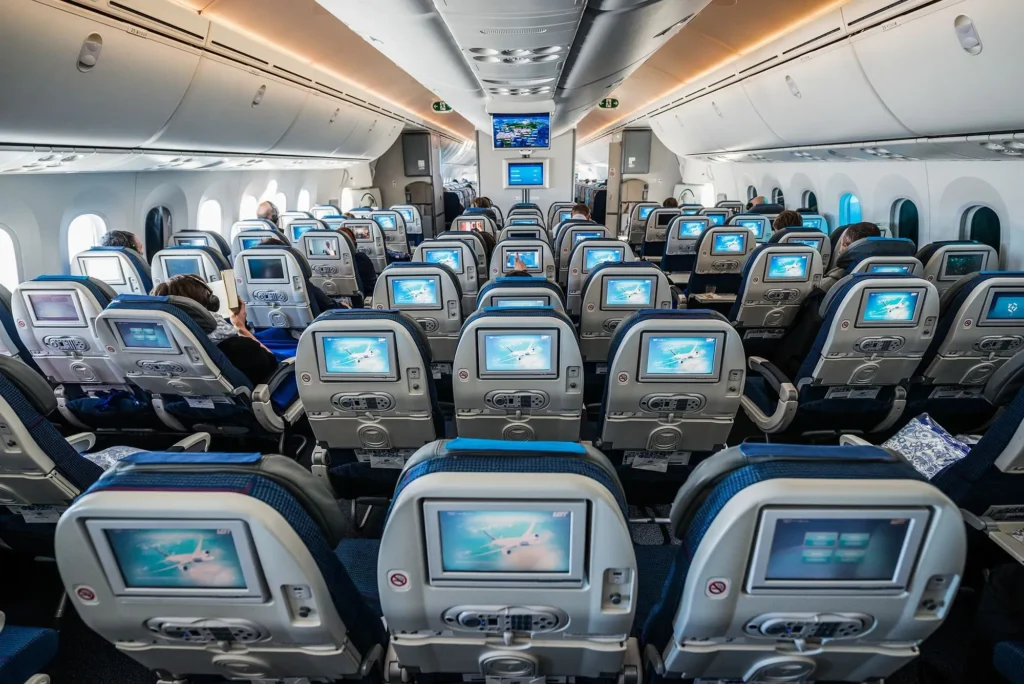Long-haul flights are often the price we pay for exploring far-off corners of the world. Whether you’re heading to Asia, Africa, or a tropical island across the globe, flying for 8+ hours can take a toll on your body and mind. The cramped cabin, recycled air, and drastic time zone changes often leave travelers drained and disoriented.
But jet lag doesn’t have to ruin the start—or end—of your trip. With the right preparation and in-flight habits, you can survive long-haul flights and minimize jet lag significantly. Here’s your ultimate guide to arriving refreshed, aligned, and ready to explore.
What Is Jet Lag, Really?
Jet lag is a temporary circadian rhythm disorder caused by rapid travel across multiple time zones. Your internal body clock, which regulates sleep, hunger, and mood, gets thrown off when your external environment no longer matches it.
Common Jet Lag Symptoms:
- Fatigue or exhaustion
- Trouble falling or staying asleep
- Mood swings or irritability
- Difficulty concentrating
- Digestive issues
Jet lag is typically worse when traveling east (e.g., New York to Paris) because you lose hours, and your body has to adjust to a shorter day.
Before the Flight: Preparation is Everything
1. Adjust Your Sleep Schedule Early
Start shifting your bedtime 1–2 hours closer to your destination’s time zone 3–4 days before departure. This helps your body start adjusting in advance.
2. Stay Hydrated
Dehydration makes jet lag worse. Drink plenty of water in the days leading up to your flight and avoid excess caffeine and alcohol.
3. Book Smart
If possible, choose flights that arrive in the early evening so you can wind down and sleep soon after arrival.
4. Plan Your First Few Days Lightly
Don’t cram your first day with back-to-back activities. Leave space to nap or adjust, especially if you’re headed somewhere dreamy like those Affordable Overwater Bungalows for a Romantic Getaway you’ve been eyeing.
During the Flight: In-Flight Strategies That Work
Here’s what to do while flying to reduce fatigue and stay aligned with your destination’s schedule.
| Strategy | Why It Helps |
|---|---|
| Reset your watch | Gets you mentally in sync with your destination time |
| Limit screen time | Reduces blue light exposure and helps your body produce melatonin |
| Use sleep aids wisely | Melatonin supplements or neck pillows help you sleep without grogginess |
| Stretch often | Keeps blood flowing and reduces swelling or discomfort |
| Stay hydrated | Aim for 8 oz. of water every hour of flight |
| Wear compression socks | Prevents blood clots and leg fatigue, especially for older travelers |
In-Flight Sleep Tips
Sleeping on a plane is rarely luxurious, but it’s not impossible. Here are a few tips to help:
- Bring noise-canceling headphones or earplugs
- Wear an eye mask to block cabin lighting
- Use a neck pillow or small lumbar support cushion
- Avoid caffeine and alcohol at least 4 hours before sleep
- Choose a window seat if you’re a light sleeper
Pro tip: Try a natural sleep aid like melatonin (0.5–3 mg) to help you fall asleep without the hangover effect of stronger medications.
After the Flight: Beat Jet Lag on Arrival
You’ve landed. Now what? Here’s how to recover faster:
1. Spend Time in Natural Light
Sunlight is the most powerful way to reset your body clock. Take a walk outdoors as soon as you can.
2. Stay Awake Until Local Bedtime
No matter how tired you are, resist the urge to sleep until it’s at least 8–9 PM local time.
3. Eat Light and on Schedule
Start eating meals at the local meal times, and avoid heavy food before bed.
4. Use Melatonin for the First Few Nights
If sleep proves elusive, a small dose of melatonin 1–2 hours before bedtime can help reset your rhythm.
Sample Jet Lag Recovery Timeline
| Time Post-Landing | Action |
|---|---|
| 0–2 Hours | Walk outdoors, stretch, hydrate |
| 2–6 Hours | Eat a light meal, explore casually |
| 6–12 Hours | Avoid naps, resist caffeine if tired |
| Bedtime (Local Time) | Wind down with melatonin and no screens |
| Next Morning | Wake up early, get 15+ mins of sunlight |
Bonus Tips for Long-Term Jet Lag Prevention
- Practice regular movement during the flight
- Use apps like Timeshifter to personalize your schedule
- Stick to your destination’s time zone from the moment you board
- Eat small meals during your flight to avoid digestive issues
FAQs: Long-Haul Flights and Jet Lag
1. How long does it take to recover from jet lag?
It typically takes 1 day per time zone crossed to fully adjust, though some people recover faster with proper planning.
2. Is jet lag worse when flying east or west?
Flying east tends to be harder on the body because you’re “losing time.” Westward travel allows for longer days, which are easier to adapt to.
3. Can kids get jet lag too?
Yes. Children are just as susceptible, but they often recover more quickly due to flexible sleep patterns.
4. Are sleeping pills recommended for long flights?
Generally, no. Most over-the-counter sleep medications can leave you groggy and dehydrated. Use natural sleep aids like melatonin instead.
5. Should I skip meals on the plane?
Not necessarily. Eat light, healthy meals and stay on a schedule that aligns with your destination to ease the transition.
Final Thoughts
Jet lag is a real challenge, but it doesn’t have to derail your travel experience. With smart pre-flight preparation, intentional in-flight habits, and a solid recovery plan post-arrival, you can dramatically reduce the effects of jet lag and start enjoying your destination right away.
So whether you’re traveling for business, adventure, or to check into one of those Affordable Overwater Bungalows for a Romantic Getaway, remember: your journey begins well before takeoff. Travel smart, sleep well, and let the world feel a little closer—even after a 15-hour flight.







